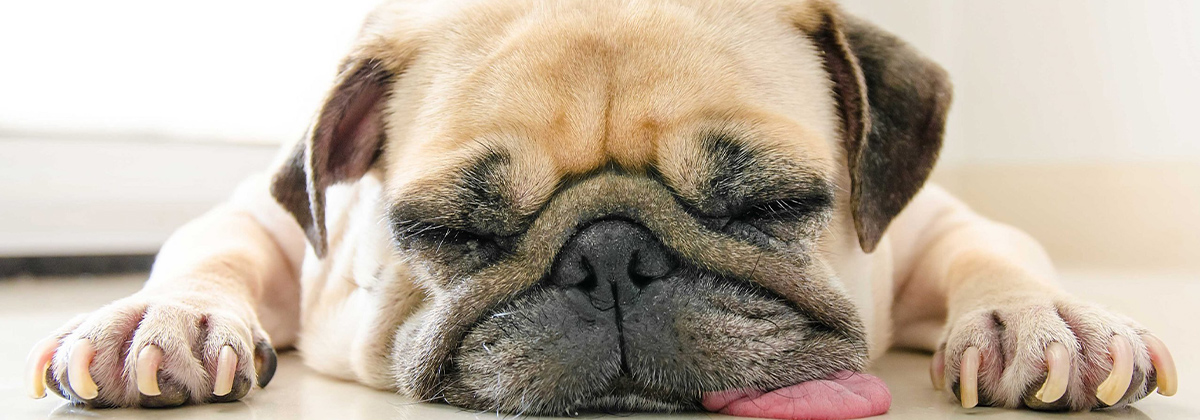29 Jan Lethargy in dogs; A simple but very dangerous sign! (Part 3)
In the previous part, we explained the dogs lethargy and their common and its important causes. We said that lethargy in dogs can be caused by many diseases and for various reasons. Ignoring it can cause more problems and more dangerous diseases for your dog. Adequate sleep for dogs depends on a variety of factors, but usually varies between 12 and 14 hours. We also detailed some important causes of lethargy in dogs. In this section, we will look at what you can do to identify the root cause and treatment of this problem.
The fear
Many times the dog is lethargic due to fear. For example, a dog that has just entered a family is afraid of his new owner for some time and may show symptoms such as lethargy. Other things like loud noises (like the sound of a cracker or a car siren) can also scare dogs. Of course, fear-induced lethargy often appears quickly and disappears after a short time, but sometimes it may continue.
Age
Puppies need more sleep than adult dogs and usually sleep 15 to 20 hours a day, which is essential for their growth and health. But when they wake up, they have to be full of energy and playful. Puppy lethargy is an important issue. If you have a puppy that is constantly tired and lethargic, be almost certain that he has a serious problem. You should contact your veterinarian immediately to find out why your puppy is lethargic. Older dogs also usually have a lower quality of sleep at night than young ones and wake up more during sleep, resulting in more sleep during the day. On the other hand, joint problems and weight gain and fatigue occur with age, all of which can cause the dog to be less active.
It’s quite normal for older dogs to lose some energy and activity. But be aware that these things don’t always apply to old age. If you find that your dog (at any age) gets more tired than usual, consider the possibility of illness. Incidentally, older dogs are also more prone to diseases that cause lethargy and intolerance to exercise.
What can you do for your dog?
If you find that your dog isn’t as relaxed or physically active as before, the most important thing isn’t to force him to be too active. Allow him if he wants to rest and pay attention to his behaviour. Contact your veterinarian immediately if you notice any signs of discomfort, but wait a day or two if your dog doesn’t have any other symptoms. If after this period the dog is still low in energy or his condition worsens, seek help from a veterinarian. If you ever see very severe symptoms such as fainting or anesthesia in your dog, take him to a veterinary clinic immediately.
Identify the root cause of the problem
The veterinarian examines the dog thoroughly to see if the dog has a limp, sore, pain or tumour in his limbs. He also asks about the medications your dog is taking, details of his diet, habits and lifestyle, and any other symptoms or changes you may have seen. Blood and urine tests are also done to find out how your dog is doing. He will probably use an electrocardiograph to see if the heart is working properly or if it has a problem. Sometimes X-rays, ultrasounds, CT scans, or MRIs may be needed.
Treatment
Lethargy and intolerance to exercise aren’t a disease in themselves, but a sign of another problem. So what you need to do and how you care for your dog depends on how the disease is diagnosed. For example, in the case of heart disease and other progressive diseases (which are becoming more severe), you may need to make changes in your dog’s exercise and activities for the rest of your life.




Sorry, the comment form is closed at this time.